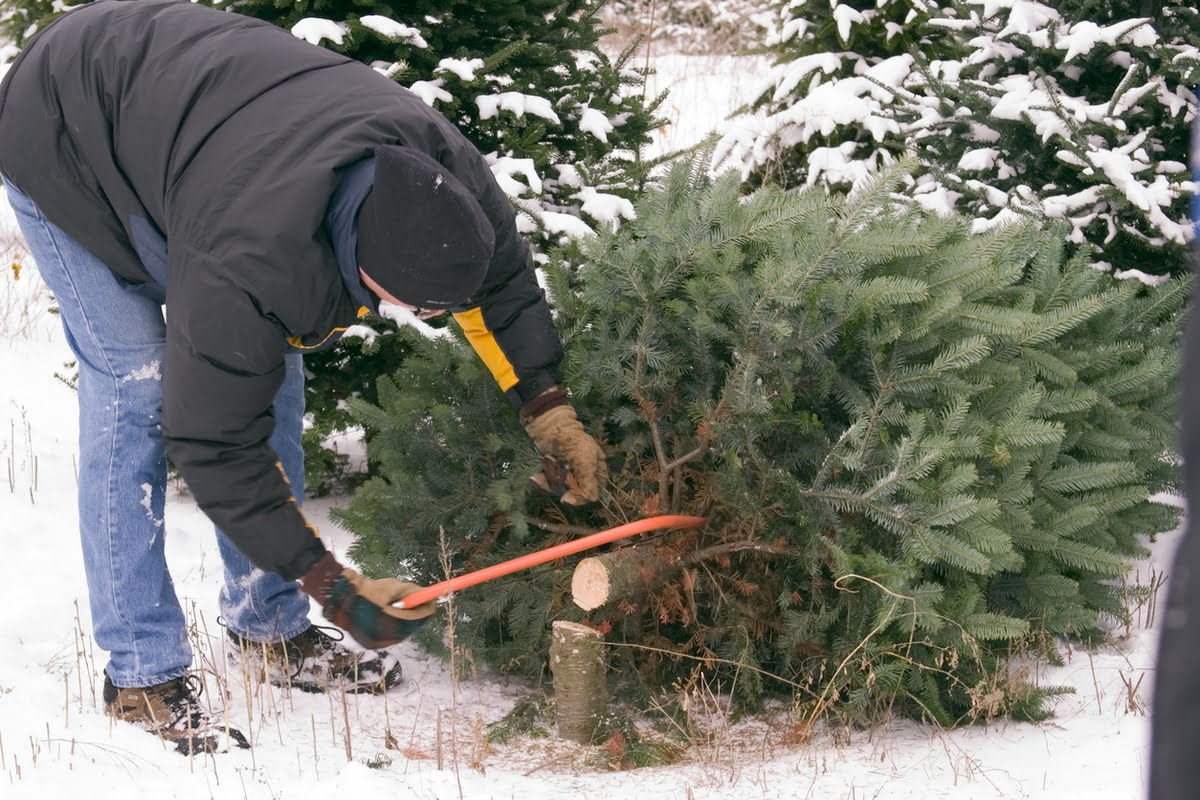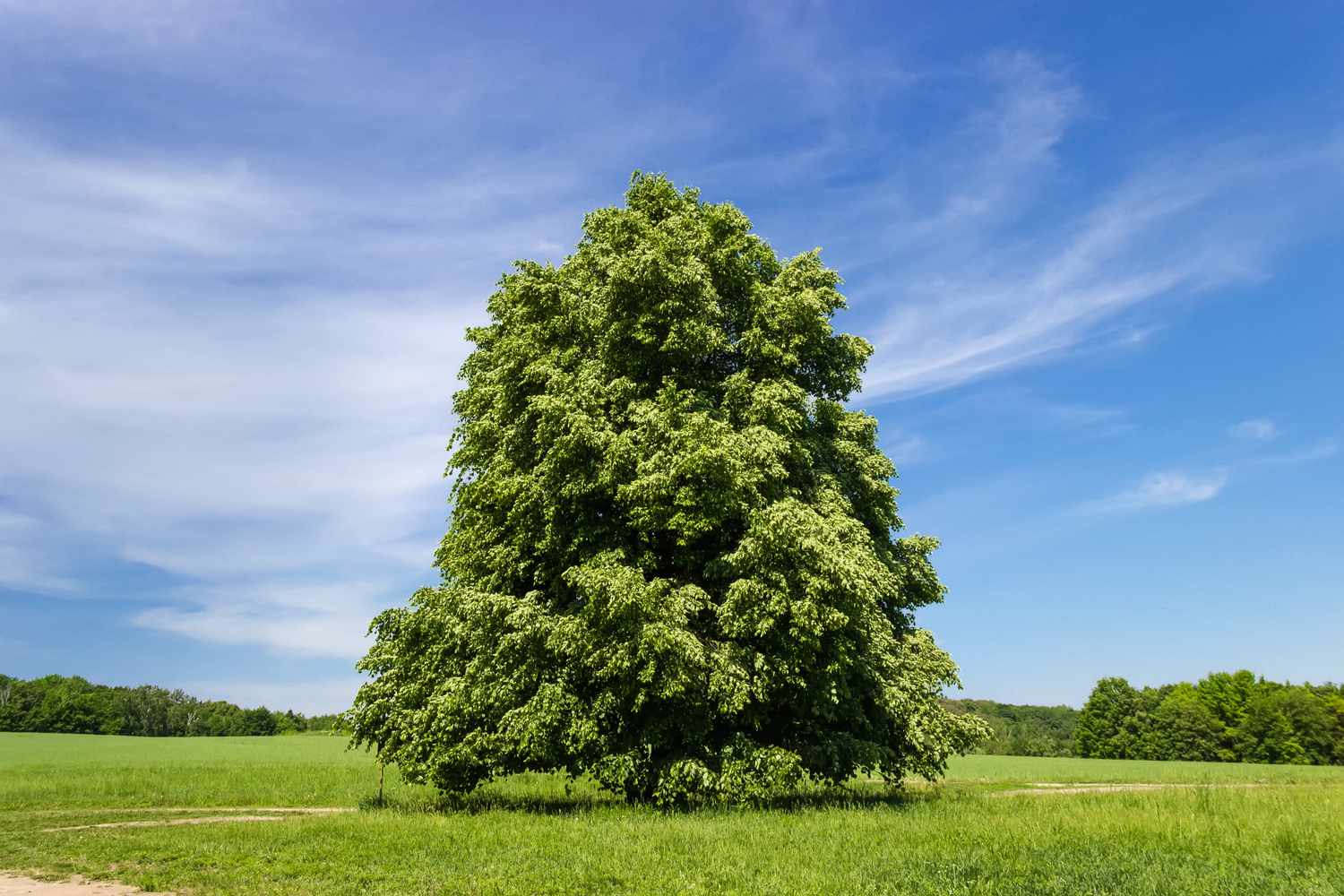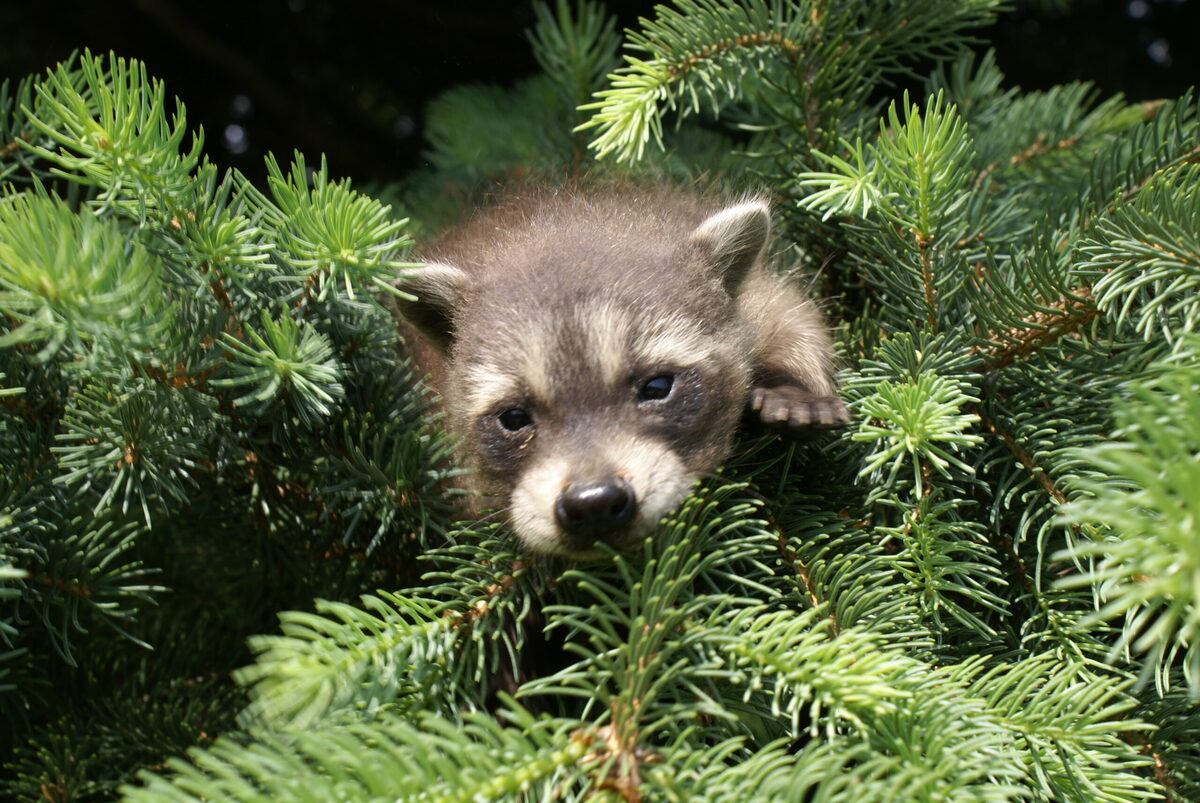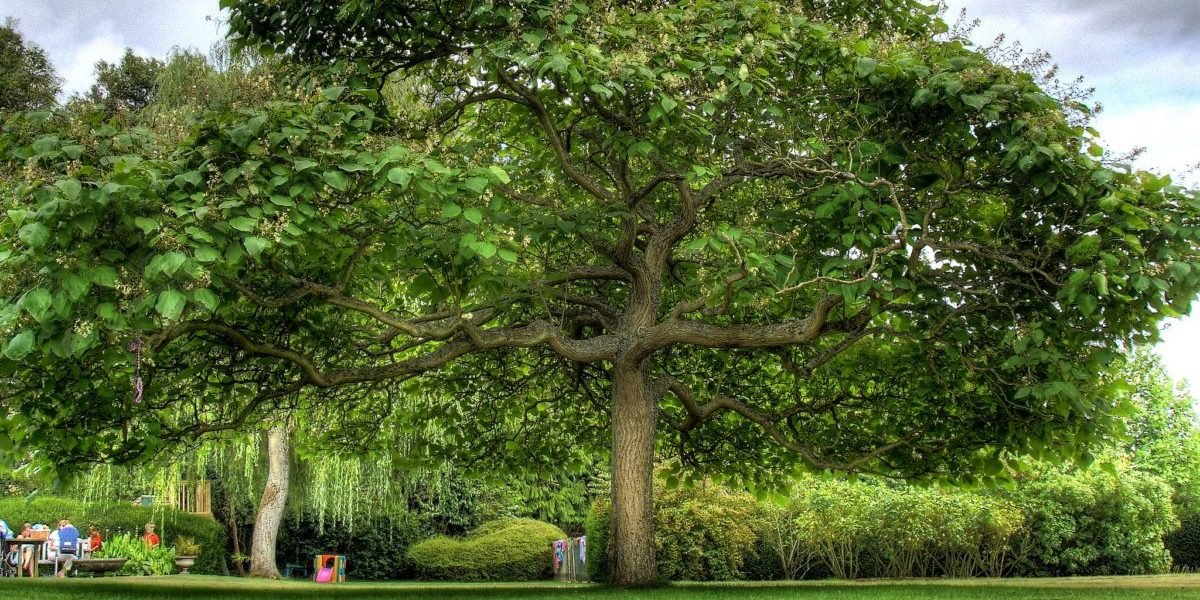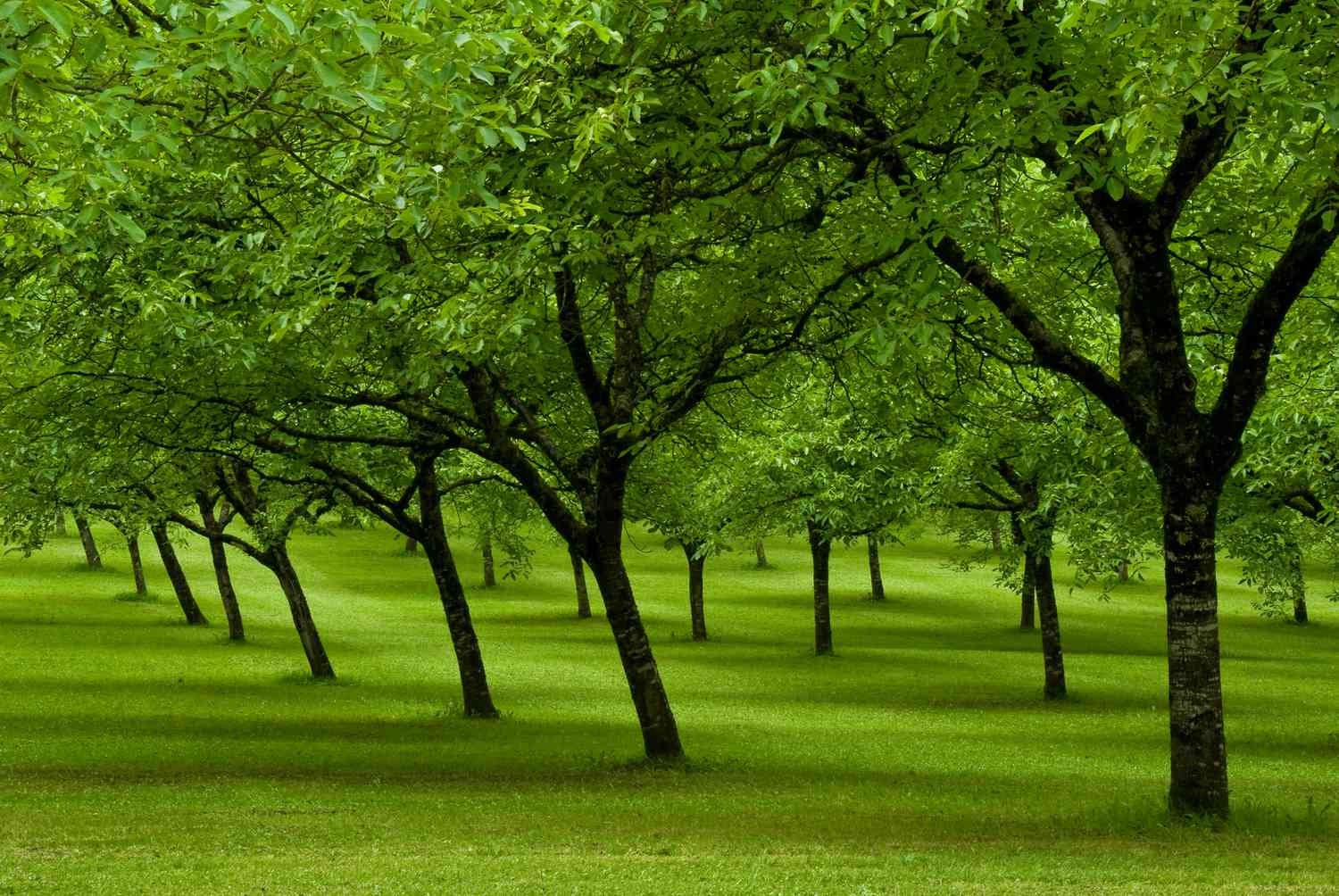Home>Types of Gardening>Ornamental Gardening>What Trees Are Evergreens
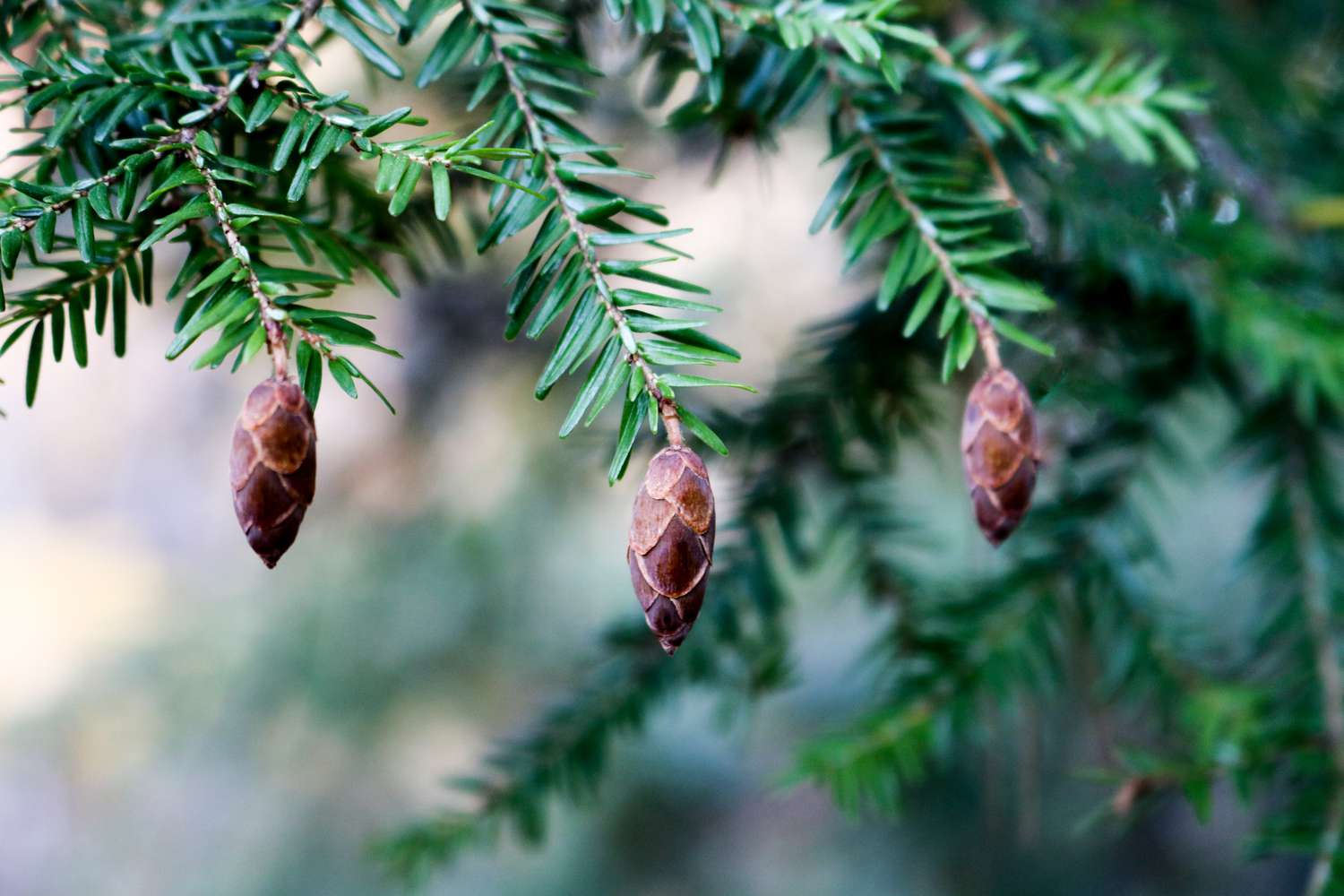

Ornamental Gardening
What Trees Are Evergreens
Modified: January 22, 2024
Discover the beauty and benefits of evergreen trees in your ornamental gardening. Get tips on selecting, planting, and caring for these timeless green wonders.
(Many of the links in this article redirect to a specific reviewed product. Your purchase of these products through affiliate links helps to generate commission for Chicagolandgardening.com, at no extra cost. Learn more)
Table of Contents
Introduction
Welcome to the world of ornamental gardening! If you have a love for nature and want to enhance the beauty of your outdoor space, then ornamental gardening is the perfect avenue for you. One of the key elements of creating a stunning garden is the use of evergreen trees. These magnificent trees provide year-round beauty with their lush foliage and vibrant colors, adding a touch of elegance and charm to any landscape.
But what exactly are evergreen trees? In this article, we will explore the world of evergreens, discussing their defining characteristics, different types, and the benefits they offer to your garden. We will also delve into the adaptations that allow these trees to thrive in various climates and provide some tips on how to care for and maintain them.
Whether you’re a seasoned gardener or just starting your journey, understanding the wonders of evergreen trees will help you make informed decisions about incorporating these stunning plants into your landscape design. So, let’s dive in and discover the beauty and versatility of evergreen trees in ornamental gardening!
Definition of Evergreen Trees
Evergreen trees are a type of woody plant that retains its foliage, or needles, throughout the year. The term “evergreen” refers to the tree’s ability to maintain its green color and foliage even during winter months, unlike deciduous trees that shed their leaves in colder seasons.
What sets evergreen trees apart is their continuous photosynthesis process. Photosynthesis is the biological process through which plants convert sunlight into energy. While many plants go through a dormant period during winter, evergreens have adapted to withstand harsh conditions and continue to perform photosynthesis, albeit at a slower rate.
Evergreen trees are found in various climates and regions around the world, thriving in both tropical and temperate environments. From towering pines to compact shrubs, these trees come in a wide range of shapes, sizes, and foliage colors, making them versatile and suitable for different gardening styles and preferences.
In addition to their green foliage, evergreen trees often produce vibrant and colorful flowers, fruits, or cones, adding to their aesthetic appeal. These trees contribute to the overall visual interest of a garden, providing year-round beauty, structure, and texture to any landscape.
It’s important to note that evergreen trees are not limited to a particular family or genus. They can belong to various botanical families, including Conifers, Cypress, Thuja, and many others. The defining characteristic of an evergreen tree is its ability to retain leaves or needles throughout the year, regardless of the specific species or family it belongs to.
Now that we understand what sets evergreen trees apart, let’s dive into the characteristics that make these trees so unique and beloved in ornamental gardening.
Characteristics of Evergreen Trees
Evergreen trees possess several distinctive characteristics that make them a popular choice for ornamental gardening. These features contribute to their year-round beauty, structural integrity, and ability to withstand challenging environmental conditions. Let’s explore the key characteristics of evergreen trees:
1. Foliage Retention: The most notable characteristic of evergreens is their ability to retain their foliage or needles throughout the year. This provides a consistent burst of greenery in the garden, even during the winter months when deciduous trees lose their leaves. The persistent foliage adds depth and color to your landscape design.
2. Variety of Shapes and Sizes: Evergreen trees come in various shapes and sizes, offering a wide range of options for different garden styles and spaces. Some species, like the towering Douglas Fir or Norway Spruce, can reach impressive heights, while others, such as dwarf conifers, are perfect for smaller gardens or containers. The diversity in growth habits allows for creative and versatile landscaping designs.
3. Foliage Colors and Textures: Evergreen trees showcase an array of foliage colors and textures. While green is the predominant color, you can find variations ranging from deep emerald to vibrant chartreuse. Some evergreens, like Blue Spruces or Gold Thread Cypress, have unique hues that add visual interest to your garden. Additionally, evergreen foliage can be soft, needle-like, or scale-like, contributing to the diverse textures in your landscape.
4. Year-Round Privacy and Screening: One of the benefits of evergreen trees is their ability to provide privacy and act as natural screens. Their dense foliage creates a barrier throughout the year, blocking out unwanted views and noise. By strategically placing evergreens along property lines or near busy areas, you can enjoy a tranquil and secluded garden space.
5. Environmental Benefits: Evergreen trees offer several environmental benefits. They help improve air quality by absorbing pollutants and releasing oxygen into the atmosphere. Evergreens also provide shade, reducing energy consumption by cooling surrounding areas in the summer. Their root systems aid in erosion control and contribute to soil stability, preventing soil erosion in your garden.
These characteristics make evergreen trees a valuable addition to any ornamental garden. They provide structure, year-round color, and environmental benefits, creating a harmonious and visually appealing landscape. Next, let’s explore the different types of evergreen trees you can incorporate into your garden.
Types of Evergreen Trees
There is a wide variety of evergreen trees to choose from, each with its distinct characteristics and visual appeal. Whether you prefer towering giants, compact shrubs, or ornamental conifers, there is an evergreen tree to suit every garden style and personal preference. Let’s explore some of the popular types of evergreen trees:
1. Conifers: Conifers are a diverse group of evergreen trees that include iconic species like pines, spruces, and firs. These trees are known for their needle-like or scale-like foliage, cone-bearing structures, and symmetrical growth habit. Conifers come in various sizes, from majestic cedars to compact junipers, making them suitable for both large landscapes and small gardens.
2. Hollies: Hollies are broadleaf evergreen trees known for their glossy, spiky leaves and vibrant berries. They provide a beautiful contrast to the needle-like foliage of conifers and add interest with their ornamental berries, which can range in colors from red to yellow or even variegated.
3. Arborvitae: Arborvitae, also known as Thuja, are popular evergreen trees for their columnar shape and dense foliage. They are commonly used for hedging, providing privacy, and creating boundaries in the landscape. Arborvitae comes in different varieties, from tall and slender to dwarf and compact forms.
4. Boxwoods: Boxwoods are versatile evergreen shrubs that can be shaped into hedges, topiaries, or used as stand-alone focal points in the garden. They have small, dense leaves and tolerate pruning well, making them excellent choices for formal gardens and geometric designs.
5. Yews: Yews are ancient evergreen trees with dark green, needle-like foliage and red berries. They are prized for their longevity and shape manipulability, allowing for creative pruning and sculpting. Yews are commonly used as specimen trees or in hedges, adding elegance and texture to any garden.
These are just a few examples of the many types of evergreen trees available for ornamental gardening. When selecting the right evergreen tree for your garden, consider factors such as the growth habit, size, foliage color, and maintenance requirements. Choose trees that complement your landscape design, provide the desired structural elements, and thrive in your climate zone.
Now that we have explored different types of evergreen trees, let’s delve into the fascinating adaptations that allow these trees to thrive in various climates.
Adaptations of Evergreen Trees
Evergreen trees have developed unique adaptations that allow them to thrive in various climates and withstand environmental challenges. These adaptations enable them to maintain their foliage and continue photosynthesis, ensuring their survival in both cold and hot regions. Let’s explore some of the key adaptations of evergreen trees:
1. Needle-like or Scale-like Foliage: One of the most significant adaptations of evergreen trees is their needle-like or scale-like foliage. This modified leaf structure helps to reduce water loss and protect the tree from freezing temperatures. The waxy coating on the needles or scales acts as a barrier, preventing excessive moisture evaporation and reducing the risk of dehydration.
2. Thick Cuticle: Evergreen trees have a thick cuticle layer on their leaves, which further aids in reducing water loss. The cuticle acts as a waterproof barrier, preventing transpiration and ensuring that the tree retains moisture in its tissues, even in dry or arid conditions.
3. Deep Root Systems: Evergreen trees often have extensive and deep root systems that allow them to access water sources even in dry or nutrient-poor soils. These deep roots provide stability to the tree and enable it to withstand drought conditions by reaching deeper groundwater reserves.
4. Flexible Branches: Evergreen trees have flexible branches that can withstand heavy snowfall or strong winds without breaking. This adaptation helps them retain their foliage even in harsh winter conditions, ensuring continued photosynthesis and nutrient uptake.
5. Cold and Heat Tolerance: Evergreen trees have varying degrees of tolerance to cold and heat, depending on the species. Some evergreens, like the Siberian Fir, have adaptations that allow them to withstand freezing temperatures, while others, like the Mediterranean Cypress, are adapted to thrive in hot and dry climates. These adaptations help them survive and maintain their foliage and vital physiological processes in extreme weather conditions.
6. Ability to Photosynthesize Year-Round: Evergreen trees possess the ability to continue photosynthesis even during winter months, although at a slower pace. This allows them to generate energy and maintain metabolic activities, enabling their survival during periods when deciduous trees have gone dormant.
With these remarkable adaptations, evergreen trees have established their resilience and ability to thrive in various environments. Their unique features not only contribute to their individual survival but also make them valuable assets in ornamental gardening, bringing year-round beauty and vitality to any landscape.
Next, let’s explore the numerous benefits that evergreen trees offer beyond their aesthetic appeal.
Benefits of Evergreen Trees
Evergreen trees provide a multitude of benefits that extend beyond their aesthetic appeal. These resilient trees offer numerous advantages for both the environment and the human experience. Let’s take a closer look at the benefits of incorporating evergreen trees in your ornamental garden:
1. Year-Round Beauty: One of the primary advantages of evergreen trees is their year-round beauty. Their lush foliage and vibrant colors provide visual interest and enhance the overall aesthetics of your garden, even during the winter months when other plants may be dormant.
2. Privacy and Noise Reduction: Evergreen trees are excellent for creating privacy screens and reducing noise pollution in your outdoor space. Their dense foliage acts as a natural barrier, shielding your garden from prying eyes and absorbing sound, making your garden a peaceful retreat.
3. Windbreak and Energy Efficiency: Evergreen trees can act as effective windbreaks. By strategically planting them as a barrier on the windward side of your property, you can reduce wind velocity and protect your garden from harsh winds. This windbreak helps to create a microclimate, reducing heating and cooling costs by providing insulation for your home.
4. Improved Air Quality: Evergreen trees contribute to cleaner air by absorbing pollutants and releasing oxygen through the process of photosynthesis. They help filter out harmful particles and reduce air pollution, creating a healthier environment for you and your family.
5. Erosion Control: The extensive root systems of evergreen trees help stabilize the soil and prevent erosion. Their roots bind the soil particles together, reducing the risk of soil erosion caused by heavy rains or strong winds. Planting evergreen trees along slopes or riverbanks can help protect vulnerable areas from erosion.
6. Wildlife Habitat: Evergreen trees provide shelter, nesting sites, and food sources for various wildlife species. Birds, squirrels, and other animals find refuge in the branches, while the seeds, berries, and cones provide essential nourishment. By planting evergreen trees, you can contribute to maintaining biodiversity and supporting local wildlife populations.
7. Year-Round Structure: The presence of evergreen trees adds structure and form to your landscape throughout the year. Even in the winter months when deciduous trees have shed their leaves, evergreens provide a sense of permanence and architectural interest, ensuring that your garden has visual appeal in every season.
These benefits highlight the value of incorporating evergreen trees in your ornamental garden. From their visual appeal to their environmental contributions, evergreens play a vital role in creating vibrant and sustainable outdoor spaces.
Now that we understand the benefits of evergreen trees, let’s explore the essential maintenance and care practices necessary to keep these trees healthy and thriving.
Maintenance and Care for Evergreen Trees
Proper maintenance and care are essential for ensuring the health and longevity of evergreen trees in your garden. While these trees are generally low maintenance, they still require some attention to thrive and maintain their beauty. Here are some key practices to keep in mind when caring for evergreen trees:
1. Watering: Adequate watering is crucial for the health of evergreen trees, especially during their establishment period. Deep watering is recommended to encourage deeper root growth. Water them thoroughly, allowing the soil to dry slightly between waterings, to avoid overwatering or waterlogged roots.
2. Mulching: Apply a layer of organic mulch around the base of the tree, extending it to the drip line. Mulching helps conserve moisture, regulate soil temperature, and suppress weed growth. Use a mulch material like wood chips or bark and maintain a depth of 2-4 inches.
3. Pruning: Regular pruning is necessary to maintain the shape, size, and overall health of evergreen trees. Prune dead, diseased, or damaged branches as soon as possible. Avoid heavy pruning during the growing season, as evergreens may struggle to recover. Aim for light shaping and maintenance pruning during late winter or early spring.
4. Fertilization: Evergreens generally have lower nutrient requirements compared to other plants. However, a balanced slow-release fertilizer can be beneficial, especially for young or newly planted trees. Follow the instructions on the fertilizer packaging and apply it during the early spring or late fall.
5. Pest and Disease Control: Regular monitoring is crucial to identify and address any pest or disease issues promptly. Inspect the trees for common issues like aphids, spider mites, or fungal infections. Use appropriate insecticides or organic treatments as necessary, following the instructions and guidelines.
6. Protection from Winter Damage: Evergreen trees can be susceptible to winter damage, especially in colder climates. Protect them from heavy snow accumulation by brushing off the snow gently from branches to prevent breakage. Consider using burlap or other protective coverings for young or vulnerable trees.
7. Monitoring Soil Moisture: Regularly check the soil moisture levels around the tree’s root zone. Avoid both overwatering and allowing the soil to become excessively dry. Adjust watering as needed to maintain adequate moisture levels.
By following these maintenance and care practices, you can ensure that your evergreen trees remain healthy and vibrant, providing year-round beauty to your garden for years to come.
Now that we have discovered the essential maintenance techniques, let’s conclude our exploration of evergreen trees and their role in ornamental gardening.
Conclusion
Evergreen trees are a fundamental element of ornamental gardening, offering year-round beauty, structure, and numerous benefits for both the environment and our well-being. Their ability to retain foliage, adapt to different climates, and provide a range of aesthetics make them invaluable assets in creating stunning garden landscapes.
From the towering conifers to the compact shrubs, evergreen trees come in various shapes, sizes, and foliage colors, offering endless possibilities for creative landscape designs. Their adaptations to withstand challenging environmental conditions, such as the needle-like foliage, deep root systems, and flexible branches, enable them to thrive in diverse climates.
The benefits of incorporating evergreen trees in your garden extend beyond their visual appeal. They provide privacy, reduce noise pollution, act as windbreaks, improve air quality, control erosion, and create a habitat for wildlife. Additionally, these trees offer year-round structure and serve as a focal point even during the dormant winter season.
Maintaining and caring for evergreen trees involves proper watering, mulching, pruning, and monitoring for pests and diseases. By following these practices, you can ensure the health and longevity of your evergreens, allowing them to flourish and continue to enhance your garden’s beauty year after year.
So, whether you’re looking to create a lush green backdrop, add privacy, or introduce structural elements to your garden, evergreen trees are a fantastic choice. With their enduring presence and countless benefits, these remarkable trees are sure to make a lasting impact on your landscape and provide enjoyment throughout the seasons.
Embrace the enchanting world of evergreen trees in your ornamental gardening endeavors and witness the beauty, functionality, and resilience they bring to your outdoor space.


